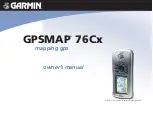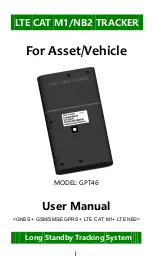
Operator Manual
Raytheon Marine GmbH
Germany
R
NSC 18
RADAR
2
−
25
3748DOC020102
Edition: 14.JAN.2005
2.3.1
Sensitivity controls
2.3.1.1
Gain and clutter processing
The NSC uses a digital video processing technique called
Scan to Scan
integration
or
field processing
. This process requires 3 complete antenna
rotations or scans of the antenna in order to
build up
or
decay
detected targets.
To the operator, this means that when a target is first detected, it appears dim.
If, on the next scan, it is still present at the same location, it appears at medium
brightness and on the third scan, it appears at full brightness. As long as the
target is present, it will appear at full brightness.
If the target fades in and out, then it will remain on the screen, dropping from full
brightness to medium and back to full brightness.
If the target is lost altogether, then it will take three scans before it completely
disappears.
Understanding this 3 scan integration is crucial for operation of the
Gain
,
Sea
and
Rain
clutter controls, because if an adjustment is made to any of these
controls,
it requires 3 complete scans to properly observe the results of the
adjustment
. The same applies if a radar target is used as a tuning indicator when
manually tuning the radar.
2.3.1.2
TUNE
MANual TUNE
The tune function uses the trackball to control tuning of the receiver frequency to
match that of the transmitter. The tuning should be adjusted on the medium or
long range scales (6 NM or higher) that show radar returns.
For a preliminary manual setting:
Use the trackball to place the cursor on the TUNE slider then press the
Left
trackball button.
Rotate the trackball for maximum deflection of the slider.
As this setting must be averaged over a complete antenna revolution, a peak
detector is included for operator convenience.
Содержание NSC 18
Страница 1: ...3464 100 037 NSC 18 Navigational Radar System User Manual 3748DOC020102 Edition 14 JAN 2005...
Страница 3: ......
Страница 4: ......
Страница 5: ......















































